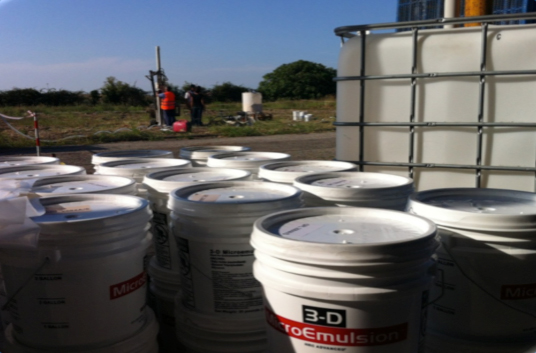Low concentration chlorinated solvent treatment via ERD

Summary
Industrial activities at a former industrial site undergoing redevelopment in Northern Italy resulted in chlorinated solvent groundwater contamination requiring remediation. Contamination consisted of chlorinated constituents 1,2-Dichloropropane at 9 μg/L and 1,1-Dichloroethene at 1 μg/L.
However, the aquifer also showed a marked concentration of a competitor electron acceptor (approx. 1,000 μg/L sulphate). Due to very low target contaminant concentrations and difficult geology, physical and chemical remediation methods were rejected, and in-situ anaerobic bioremediation using REGENESIS’ 3-D Microemulsion® was deemed the most cost-effective approach.
1m 2s reading time
Treatment
A total of 17,000 L 3-D Microemulsion was applied by Direct-Push into 26 No. injection points in a grid configuration with 3m by 3m spacing. Target treatment depth was 2m to 6m BGL within a saturated soil matrix with clay lenses formation.
What’s Special?
The challenge of treating very low contaminant concentrations within a low permeability formation was overcome by enhanced anaerobic bioremediation. Additionally, a mix of contaminants and competing electron acceptors did not hinder the performance of 3-D Microemulsion. Remedial works were completed in 2012 and long-term monitoring is ongoing.



 Americas
Americas Europe
Europe Français
Français Deutsch
Deutsch Italiano
Italiano Español
Español
